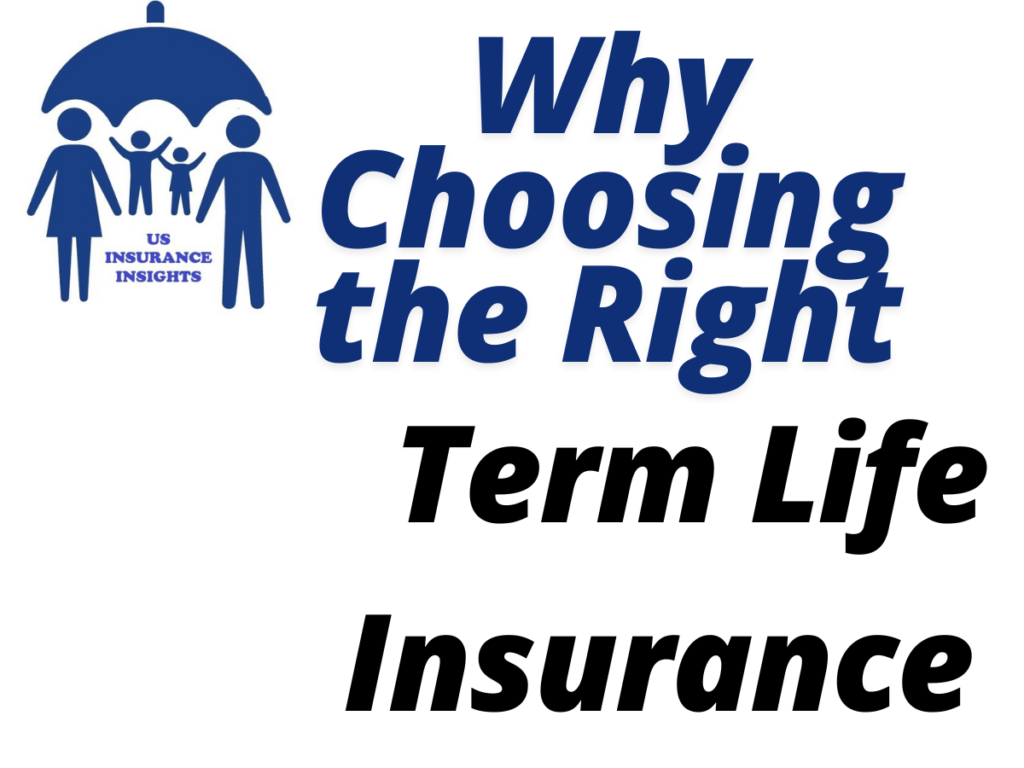Life is full of uncertainties, and planning ahead is one of the smartest decisions you can make for your loved ones. Term policy life insurance offers a simple and affordable way to provide financial protection in case the unexpected happens. This article will guide you through understanding term life insurance, its benefits, and how to choose the best plan for your needs. Let’s dive into the essentials of this vital financial tool. Choosing the Right Term Life Insurance
What is Term Policy Life Insurance?
A term policy life insurance is a type of life insurance that provides coverage for a specific period, or “term,” typically ranging from 10 to 30 years. If the insured person passes away during this term, their beneficiaries receive a death benefit—a lump sum payout to cover expenses like mortgage payments, education costs, or daily living expenses. Choosing the Right Term Life Insurance
Unlike whole life insurance, term insurance doesn’t have a savings or investment component. This makes it more affordable and straightforward, perfect for individuals seeking coverage without breaking the bank.
Choosing the Right Term Life Insurance
1. Affordability
Term policies are generally more cost-effective compared to other life insurance options. For a fixed premium, you can secure a substantial coverage amount, ensuring your family’s financial future is protected.
2. Flexibility
With various term lengths available, you can choose a policy that aligns with your financial goals. For instance, if you want coverage until your children finish college, a 20-year term might be ideal. Choosing the Right Term Life Insurance
3. Peace of Mind
Knowing your family will be financially secure even in your absence is invaluable. A term policy ensures that your loved ones won’t struggle to make ends meet or pay off debts. Knowing your family will be financially secure even in your absence is invaluable. A term policy ensures that your loved ones won’t struggle to make ends meet or pay off debts. Choosing the Right Term Life Insurance
4. Tax Benefits
In many cases, term life insurance policies come with tax benefits. Premiums paid and the death benefit received may be tax-exempt under certain laws, adding another layer of financial advantage. Choosing the Right Term Life Insurance
Knowing your family will be financially secure even in your absence is invaluable. A term policy ensures that your loved ones won’t struggle to make ends meet or pay off debts. Choosing the Right Term Life Insurance
Selecting the right policy can feel overwhelming, but breaking it down into steps makes the process easier: Choosing the Right Term Life Insurance
Step 1: Determine Your Coverage Needs
Think about your financial responsibilities, such as: Choosing the Right Term Life Insurance
Outstanding debts (e.g., mortgage or loans) Choosing the Right Term Life Insurance
Choosing the Right Term Life Insurance
Future expenses like your children’s education
Step 2: Decide on the Term Length
Choose a term that matches your financial goals. If you’re in your 30s and want coverage until retirement, a 30-year term might be the best fit. Choosing the Right Term Life Insurance
Step 3: Compare Premiums
Use online tools and calculators to compare premiums from different insurers. Look for a policy that balances affordability with sufficient coverage.
Step 4: Check the Insurer’s Reputation
Research customer reviews and ratings to ensure the insurer is reliable and has a good claim settlement ratio. Choosing the Right Term Life Insurance
Step 5: Read the Fine Print
Understand the terms and conditions of the policy, including exclusions and additional riders, before signing up. Choosing the Right Term Life Insurance
Choosing the Right Term Life Insurance
1. Death Benefit
The lump sum paid to beneficiaries when the insured person passes away during the policy term.
2. Premium
The amount you pay, usually monthly or annually, to keep the policy active. Choosing the Right Term Life Insurance
3. Riders
Optional add-ons that enhance your coverage, such as critical illness or accidental death riders. Choosing the Right Term Life Insurance
Real-Life Anecdote: The Importance of Term Insurance
Consider the story of James, a father of two. At 35, James took out a 20-year term policy to ensure his family’s financial stability. Tragically, he passed away in a car accident five years later. Thanks to the policy, his wife received a payout that covered their mortgage and provided for their children’s education. This highlights how crucial term life insurance can be in safeguarding your family’s future.
Enhancing Your Policy with Riders
Adding riders to your term insurance can provide extra benefits tailored to your needs. For example:
Critical Illness Rider: Offers a payout if you’re diagnosed with a serious illness. Choosing the Right Term Life Insurance
Accidental Death Rider: Increases the death benefit if the insured dies due to an accident.
Choosing the Right Term Life Insurance
1. Can I renew my term policy after it expires?
Yes, many insurers allow you to renew your policy, but premiums may increase based on your age and health. Choosing the Right Term Life Insurance
2. What happens if I outlive my policy?
Most term policies don’t provide a payout if you outlive the term. However, you can explore return-of-premium options, which refund the premiums paid. Choosing the Right Term Life Insurance
3. Is medical testing required for a term policy?
In many cases, yes. A medical exam helps insurers assess your health and determine premiums.
Choosing the Right Term Life Insurance
Term policy life insurance is a powerful tool for providing financial security to your loved ones. Its affordability, flexibility, and simplicity make it an excellent choice for individuals seeking peace of mind. By understanding your coverage needs and comparing options, you can choose a policy that perfectly aligns with your goals. Choosing the Right Term Life Insurance
Don’t wait—start exploring your options today and take the first step towards protecting what matters most. Choosing the Right Term Life Insurance

